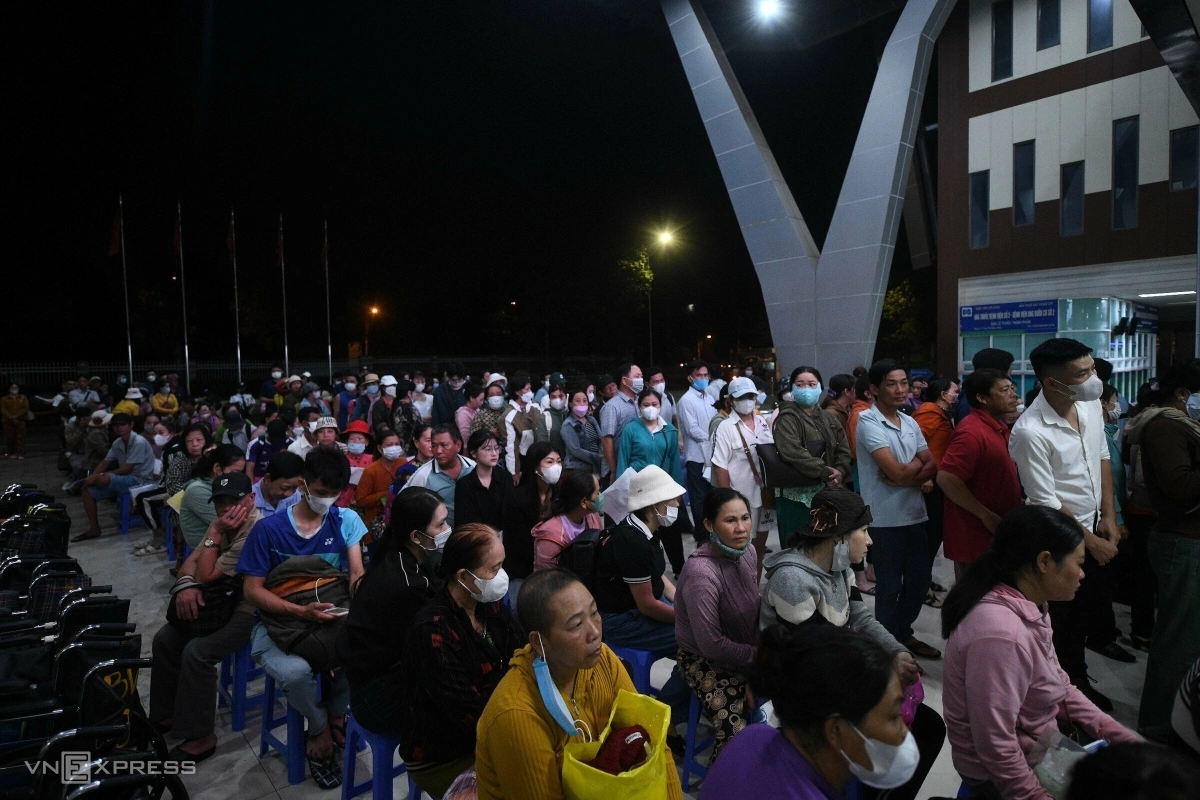At 4 a.m. Monday, HCMC Oncology Hospital opened its doors, where hundreds of patients had already been waiting outside. The hospital prepared seats beforehand, but the sheer number of people meant that many had to stand and wait.
Around 4,800 patients are diagnosed at the hospital every day, an increase of 8-10% compared to previous years. 84% of them came from outside of HCMC, an increase from 75% on previous years.
As more and more patients come to the hospital for diagnoses, the hospital has deployed many measures to reduce waiting time. The hospital begins receiving patients from 5 a.m.
Over the last 7 years, Nguyen Thi Thu Kim, 63, from Phu Yen in central Vietnam, has come to the hospital regularly to get her ovarian cancer treated.
She gets on a coach the previous afternoon, travels through the night to get to HCMC, then catches another car from the station to the hospital at midnight. She is one of the earliest to show up at the hospital.
"This time, I came early to get my number, so I did not have to wait around for hours like last time. I also had more time to rest and eat breakfast before my turn," Kim said.
At 4:30 a.m., medical workers began to hand out numbers to patients. Depending on the number of people, they would be split into either one or two rows, each spanning around 30 m.
To prevent disorder, the hospital often instructs patients with and without insurance to stand in different areas, as well as preparing necessary papers on hand.
It takes around 30 seconds for each patient to receive their numbers and come to the stall.
On her first visit to the hospital, Le Thi Loan (pictured) caught a coach from Dak Lak in the Central Highlands the previous night. She wants to have a tumor at her appendix diagnosed.
"I've been at the hospital since 3 a.m. I'm pretty tired, but I came early in the morning so that I could save money instead of having to rent an apartment over night," she said.
Patients then move to another room to pay the hospital fees. At around 7:30 a.m., when doctors are present, the patients have already completed the initial procedures to be diagnosed.
At 7:45 a.m., the chairs for chemotherapy were already full. Around 1,000-1,100 patients need either chemotherapy or radiotherapy within the day. Around 800-900 patients are hospitalized.
A radiation therapist works on a patient. Lately, cancer patients have to wait 4-6 weeks for radiotherapy.
To meet demand, the hospital has increased the number of radiotherapy sessions, starting from the early morning to around 10 p.m. every day.
The hospital also deploys measures to reduce the waiting time for surgeries to 1-3 weeks, so that waiting time for radiotherapy is reduced by 1-2 weeks as well.
At around 8 a.m., crowds of people can be seen waiting for their diagnosis at the hospital.
HCMC is cooperating with other localities to improve the quality and effectiveness in the diagnosis and treatment of cancer.
Localities have formed networks that take care of patients from the screening process to their cancer diagnosis, even until the later stages of the disease. The network is not only found in HCMC, but also across the Mekong Delta, southeastern Vietnam, the Central Highlands and south-central Vietnam.















